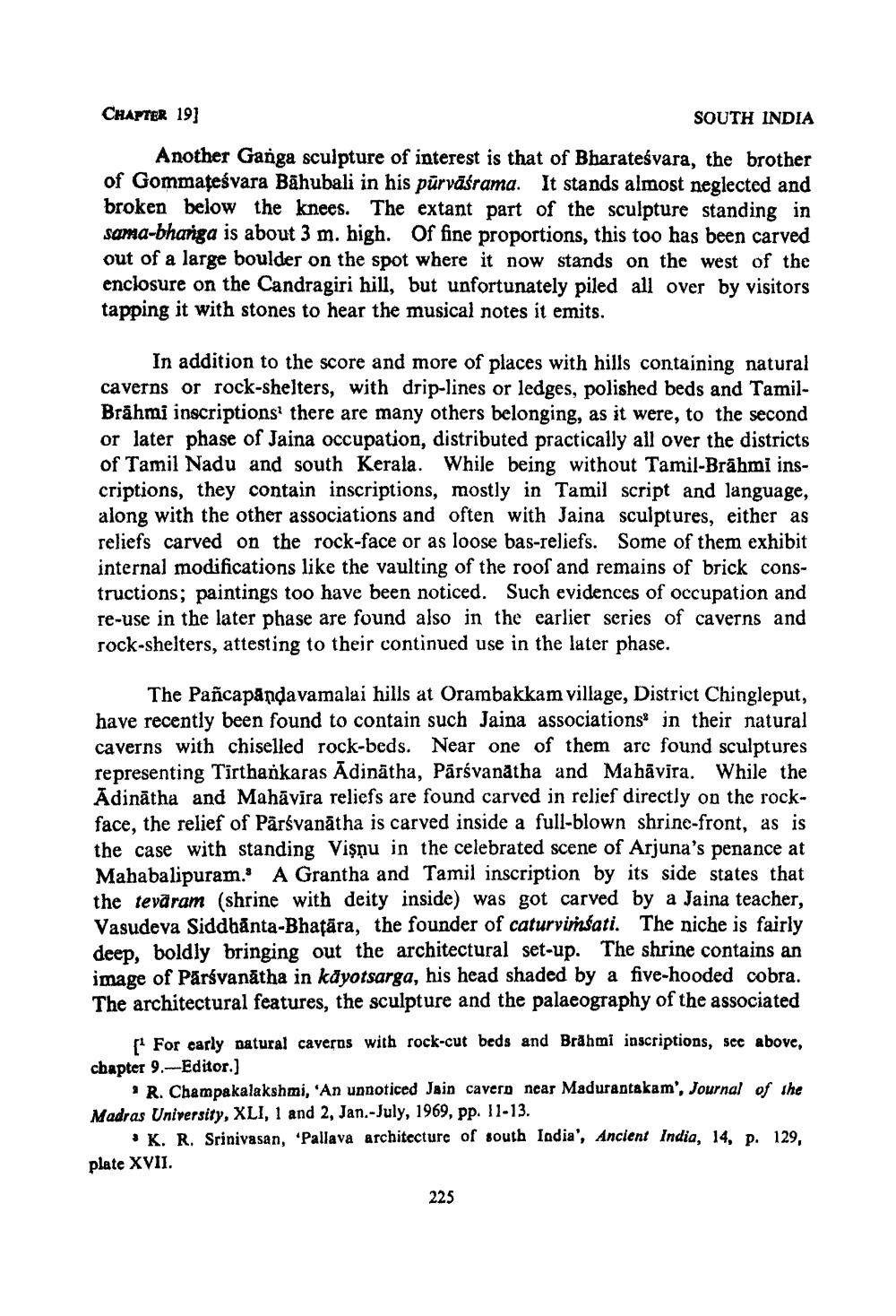________________
CHAPTER 19]
SOUTH INDIA
Another Ganga sculpture of interest is that of Bharateśvara, the brother of Gommateśvara Bāhubali in his pūrvāśrama. It stands almost neglected and broken below the knees. The extant part of the sculpture standing in sama-bharga is about 3 m. high. Of fine proportions, this too has been carved out of a large boulder on the spot where it now stands on the west of the enclosure on the Candragiri hill, but unfortunately piled all over by visitors tapping it with stones to hear the musical notes it emits.
In addition to the score and more of places with hills containing natural caverns or rock-shelters, with drip-lines or ledges, polished beds and TamilBrāhmi inscriptions there are many others belonging, as it were, to the second or later phase of Jaina occupation, distributed practically all over the districts of Tamil Nadu and south Kerala. While being without Tamil-Brāhmi inscriptions, they contain inscriptions, mostly in Tamil script and language, along with the other associations and often with Jaina sculptures, either as reliefs carved on the rock-face or as loose bas-reliefs. Some of them exhibit internal modifications like the vaulting of the roof and remains of brick constructions; paintings too have been noticed. Such evidences of occupation and re-use in the later phase are found also in the earlier series of caverns and rock-shelters, attesting to their continued use in the later phase.
The Pañcapāndavamalai hills at Orambakkam village, District Chingleput, have recently been found to contain such Jaina associations in their natural caverns with chiselled rock-beds. Near one of them are found sculptures representing Tirthankaras Ādinātha, Pārsvanatha and Mahävira. While the Adinātha and Mahāvira reliefs are found carved in relief directly on the rockface, the relief of Pārsvanātha is carved inside a full-blown shrine-front, as is the case with standing Vişnu in the celebrated scene of Arjuna's penance at Mahabalipuram. A Grantha and Tamil inscription by its side states that the tevāram (shrine with deity inside) was got carved by a Jaina teacher, Vasudeva Siddhanta-Bhatāra, the founder of caturvimsati. The niche is fairly deep. boldly bringing out the architectural set-up. The shrine contains an image of Pärsvanātha in kdyotsarga, his head shaded by a five-hooded cobra. The architectural features, the sculpture and the palaeography of the associated
For early natural caverns with rock-cut beds and Brāhmi inscriptions, sec above, chapter 9.-Editor.)
IR. Champakalakshmi, 'An unnoticed Jain cavern near Madurantakam', Journal of the Madras University, XLI, 1 and 2, Jan.-July, 1969, pp. 11-13.
K. R. Srinivasan, Pallava architecture of south India', Ancient India, 14, p. 129, plate XVII.
225




